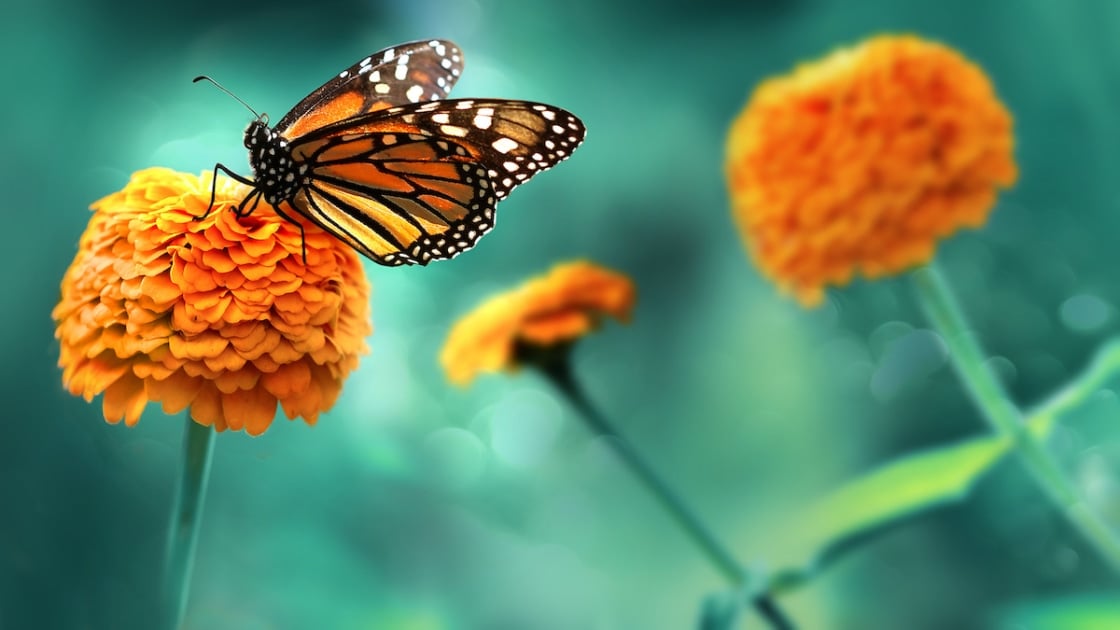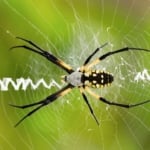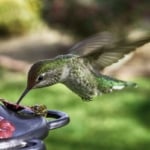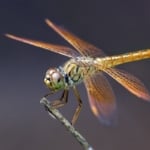10 Amazing Facts About The Monarch Butterfly
The monarch butterfly is the most beautiful and interesting creature in the insect world, and its migration is a source of fascination for many. How much do you know about them? These 10 facts that will amaze!

Each spring, millions of monarch butterflies return to their summer breeding grounds in the northeastern U.S. and Canada, a trek of some 3,000 miles from Mexico where they went to escape the cold of winter—a migration that’s one of the greatest natural events on Earth.
How much do you know about the monarch butterfly? These 10 facts will amaze!
10 Amazing Facts About The Monarch Butterfly
1) The adult female monarch butterfly lays tiny eggs covered with a sticky substance on the underside of milkweed leaves, which are extremely toxic. The caterpillar hatches from its egg several days later and survives on these milkweed leaves.
2) The monarch caterpillar and adult butterfly retain the poison from the milkweed leaves in its body, thus protecting it from being eaten by predators.
3) Every spring, adult monarch butterflies head north from their winter respite in the southern forests of Mexico and California, and return in the fall—a journey some 2,000-3,000-miles each way!
4) The monarch butterfly will continue to feed, fly, and reproduce throughout the U.S. and southern Canada, for several generations. It is the fourth generation of monarch butterflies that actually migrate to Mexico in fall.
5) Monarch butterflies travel as much as 100 miles a day during its 3,000-mile migration south.
6) During its migration, each butterfly relies on the huge volume of food it ate when it was a caterpillar for fuel.
7) Monarchs smell with their antennae. Nectar and water are tasted by the sensory hairs on their legs and feet.
8) Monarch butterflies cannot bite, and drink through a long tongue called a proboscis that works like an eyedropper drawing up nectar. Like a retractable garden hose, its tongue coils up under its lower lip when not in use.
9) Once the Monarch butterfly is hatched, it only lives for approximately 2–6 weeks.
10) The monarch butterfly’s bright colors serve as a warning to predators that they are poisonous, and they should attack at their own risk! Monarchs not only taste bad, but they are poisonous due to the presence of cardenolides (a type of steroid) in their bodies, which the caterpillars get from the milkweed they feed on.
What Does Folklore Say About The Monarch Butterfly?
According to folklore, “early migration of the Monarch butterfly” is one of the 20 signs of a hard winter ahead!
What Can We Do to Help the Monarch Butterfly Thrive?
Sadly, monarch butterflies are headed to extinction. To save them, the U.S. Fish and Wildlife Service, the National Wildlife Federation, and the National Fish and Wildlife Foundation are working together to grow milkweed and other butterfly-friendly plants along the monarch’s main migration route from Minnesota to Mexico.
We can help too. Here’s how:
- Establish a wildflower garden in your yard for pollinators like the monarch butterfly and honey bee.
- Ask your local government and garden clubs to work together to establish pollinator wildflower gardens in city parks, etc.
- Encourage local farmers to designate space along fence rows, and in ditches for native wildflowers to thrive, without the use of chemical sprays.
- Plant milkweed in your yard, or field.
- Plant native wildflowers along your driveway and fencing.
- Don’t spray chemical herbicides on your lawn, garden, or fields.
- If your local electric authority sprays chemical herbicides under power lines on your property, contact them, complain and ask to be placed on the no-spray list.
- Buy a butterfly kit. Encourage your children to experience, and appreciate the life cycle of the butterfly, first hand.
Keep Learning
How To Attract Butterflies To Your Garden
9 Bugs That Are Fun Or Beneficial
10 Amazing Facts About Hummingbirds
Join The Discussion!
Do you love monarch butterflies?
What questions do you have about them?
When was the last time you saw a monarch butterfly?
Please post any of your photos here!

Deborah Tukua
Deborah Tukua is a natural living, healthy lifestyle writer and author of 7 non-fiction books, including Pearls of Garden Wisdom: Time-Saving Tips and Techniques from a Country Home, Pearls of Country Wisdom: Hints from a Small Town on Keeping Garden and Home, and Naturally Sweet Blender Treats. Tukua has been a writer for the Farmers' Almanac since 2004.












Excellent/Interesting video. I’m a senior now but have always loved seeing the Monarchs flitting around over the passing years.
I’m a permaculture gardener from Manly, IA; a town that runs along I-35, the monarch path. I am very focused on the ecosystems surrounding my home. As of today my focal plants will be my rhizomes milkweed plants. My starting goal is to build the monarch butterfly population. To build a permaculture world around my milkweed will be a challenge, but exciting. I needed a focal point and now I have one. Oh, and one more thing…I’m looking for accountability partners particularly in the permaculture field of interest.
I’ve been saving Monarchs for a couple years, but this year I have saved more than ever. Last year I kept several milkweed seeds and grew 16 milkweed plants. I also have several more that came up from wintering over. As soon as I’d see a caterpillar, I’d get them in my butterfly tent because preditors would kill them very quickly. I think it’s wasps. Anyway, I’ve released at least 20 this summer and probably have that many more. Also working on black swallowtails with dill and fennel plants.
I just started raising monarch butterflies this spring in northern Florida where we spend our winters. We spend our summers in northern MI.
I learned of this hobby from a colleague and have been loving it. I have passed on what I have learned to several neighbors and the excitement continues to build. I have shared this love of nature with my daughter and granddaughter as well.
So far this spring I have had two butterflies and I currently have 7 chrysalis waiting to hatch into beautiful monarchs!
I’m learning wasps are a huge predator and have impacted my recent hatching of eggs which has caused me to become a protective mother bear with my chubby little ones. Now they are all moved inside my lanai as they safely prepare to eat, grow, cocoon and emerge as a beautiful monarch. They are then set free to go into the world to keep the cycle moving forward.
I will carry my love of monarchs to MI and keep they cycle going there as well!
The miracle of nature is fascinating!
Hey, nice story! I’m in N.C., and I’m curious about moving the Monarch Butterflies anywhere north from Florida as apparently they are known to be native in Florida and are not part of the migratory M.B.s.
My son just sent me a picture. 100 or so butterflies in his tree out in Lee, Il
Just got Monarch butterfly on my milkweed. The mother gave birth to 12 caterpillars. Now the mother is in pupa stage. I m about to sent a Monarch Butterfly to Mexico again after 7 seven years! Sed my pictures on FB
Aww, didn’t realize they had such a short life span. Also, FTA – ” Sadly, Monarch butterflies are headed to extinction.” They are gorgeous and I hope this does NOT come to pass.
same
that is so cool
E
nice